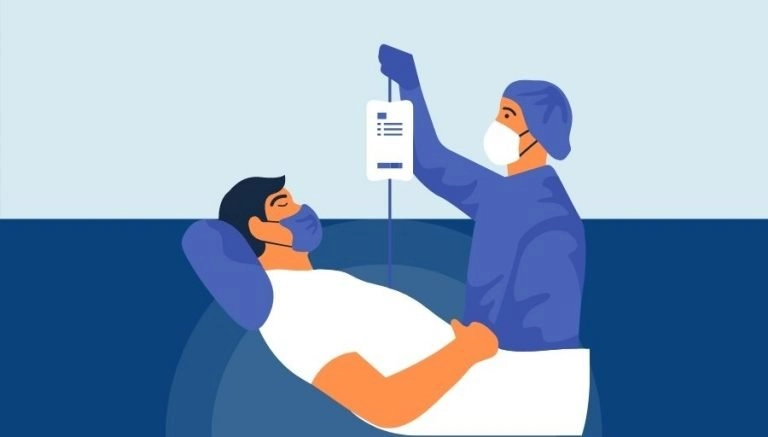How To Use CPT Code 52334
CPT 52334 describes the procedure of cystourethroscopy with the insertion of a ureteral guide wire through the kidney to establish a percutaneous nephrostomy in a retrograde manner. This article will cover the official description, procedure details, qualifying circumstances, appropriate usage, documentation requirements, billing guidelines, historical information and billing examples.
1. What is CPT Code 52334?
CPT 52334 can be used to describe the procedure of cystourethroscopy with the insertion of a ureteral guide wire through the kidney to establish a percutaneous nephrostomy in a retrograde manner. This code is used when a healthcare provider performs this specific procedure to create an artificial pathway between the kidney and the outside of the body for urine drainage or stone removal from the renal pelvis.
2. Official Description
The official description of CPT code 52334 is: ‘Cystourethroscopy with insertion of ureteral guide wire through the kidney to establish a percutaneous nephrostomy, retrograde.’
3. Procedure
- The healthcare provider begins by inserting a cystoscope, a lighted tubular instrument, into the urethra and slowly advancing it into the bladder.
- Using the camera attached to the cystoscope, the provider examines the urethra, prostatic urethra, and ureteric openings, and injects sterile saline water into the bladder to improve visibility.
- A guidewire is then passed up through the ureter and into a renal calix of the kidney.
- Next, a needle is advanced over the guidewire and exited out through the skin, creating a percutaneous retrograde nephrostomy.
- The provider dilates the tract over the needle, ensuring a clear pathway for urine drainage or stone removal.
- Finally, the guidewire and cystoscope are removed, and the nephrostomy tube is secured with sutures.
4. Qualifying circumstances
CPT 52334 is performed when a percutaneous retrograde nephrostomy is needed for urine drainage or stone removal from the renal pelvis. This procedure is typically performed on patients who have specific conditions or complications that require this intervention. It is important to note that CPT 52334 should not be reported in conjunction with other specific codes, such as 50437, 52000, or 52351.
5. When to use CPT code 52334
CPT code 52334 should be used when a healthcare provider performs the cystourethroscopy procedure with the insertion of a ureteral guide wire through the kidney to establish a percutaneous nephrostomy in a retrograde manner. This code is appropriate when the provider creates an artificial pathway between the kidney and the outside of the body for urine drainage or stone removal from the renal pelvis.
6. Documentation requirements
To support a claim for CPT 52334, the healthcare provider must document the following information:
- Patient’s condition or complications necessitating the percutaneous retrograde nephrostomy
- Details of the cystourethroscopy procedure, including the insertion of the ureteral guide wire
- Date and time of the procedure
- Specific steps taken during the procedure, such as the dilation of the tract and securing of the nephrostomy tube
- Any complications or additional interventions performed
- Signature of the healthcare provider performing the procedure
7. Billing guidelines
When billing for CPT 52334, ensure that the procedure is performed as described in the official description. It is important to follow the specific guidelines and not report this code in conjunction with other specific codes, such as 50437, 52000, or 52351. Additional tips for reporting CPT 52334 may include the use of modifiers or specific codes for related procedures, such as nephrostomy tube placement or exchange.
8. Historical information
CPT 52334 was added to the Current Procedural Terminology system on January 1, 1990. There have been no updates or changes to the code since its addition.
9. Examples
- A urologist performs cystourethroscopy with the insertion of a ureteral guide wire through the kidney to establish a percutaneous nephrostomy in a retrograde manner for a patient with a complex renal stone.
- A nephrologist conducts the cystourethroscopy procedure with the insertion of a ureteral guide wire through the kidney to establish a percutaneous nephrostomy in a retrograde manner for a patient with obstructive uropathy.
- An interventional radiologist performs the cystourethroscopy procedure with the insertion of a ureteral guide wire through the kidney to establish a percutaneous nephrostomy in a retrograde manner for a patient with a renal abscess.
- A urological surgeon conducts the cystourethroscopy procedure with the insertion of a ureteral guide wire through the kidney to establish a percutaneous nephrostomy in a retrograde manner for a patient with hydronephrosis.
- An interventional radiologist performs the cystourethroscopy procedure with the insertion of a ureteral guide wire through the kidney to establish a percutaneous nephrostomy in a retrograde manner for a patient with a complex urinary tract infection.
- A urologist conducts the cystourethroscopy procedure with the insertion of a ureteral guide wire through the kidney to establish a percutaneous nephrostomy in a retrograde manner for a patient with a renal tumor.
- An interventional radiologist performs the cystourethroscopy procedure with the insertion of a ureteral guide wire through the kidney to establish a percutaneous nephrostomy in a retrograde manner for a patient with a ureteral stricture.


